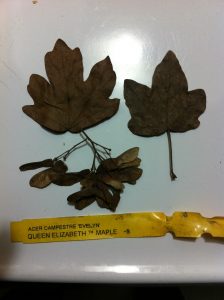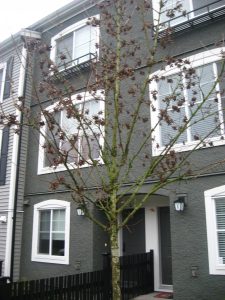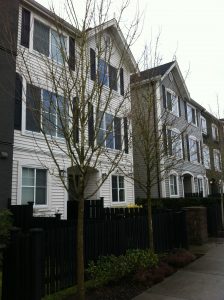First encounter with Acer campestre
Working in Langley, BC on an early spring day, I noticed a low tree branch obstructing an entrance. This is called ‘landscape eye’ and the subject of an earlier blog post. So out came my snips and the branch was cleared out of the way. In seconds. Then the ‘bleeding’ started! In seconds. Oops. I noticed the samaras and only then realized this was a maple tree. The actual species name escaped me because this was our first encounter. I would later look it up and a blog was born.
Maple rule
Maples are ‘bleeders’. They lose large amounts of sap when pruned at the wrong time. This is the maple rule: prune before Christmas or in summer. This was early spring so the sap ‘bleeding’ was noticeable. One week later it had stopped. Thankfully.
If you prune in summer, make sure it’s not under drought conditions. Under drought conditions, trees close their leaf openings to avoid water loss. This means that carbon dioxide can’t enter and food can’t be produced. The tree lives on reserves stored in its branches. If you prune too many branches off, you can starve the tree.
Field maple details
Campestre means ‘from fields’. It is an attractive medium-sized deciduous street tree. It tolerates urban conditions like drought, clay soils, air pollution and soil compaction. It prefers full sun to part shade conditions. It has yellow fall color and can be pruned, sometimes even harshly. In Europe it’s shaped into hedges.
The leaves have five blunt lobes.
This is a low-maintenance street tree. The only work I have done on these trees is walkway clearance. I have yet to encounter this maple species on other sites.
Have you seen Acer campestre?







